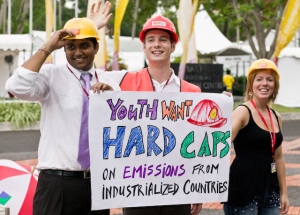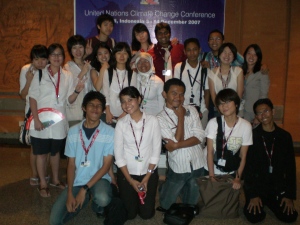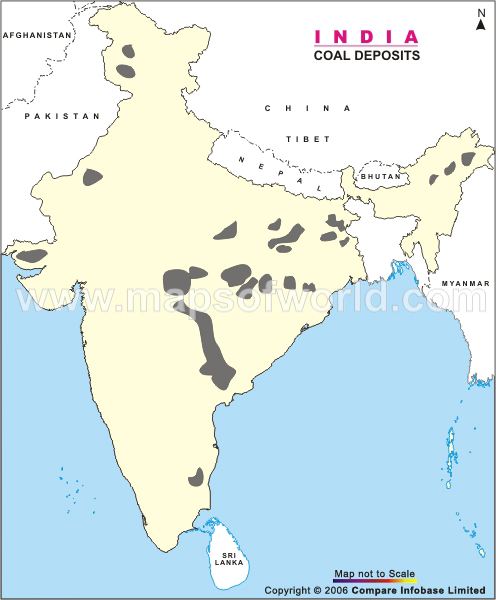Indian Youth Climate Network Policy Brief on Agriculture under UNFCCC
Background & Current Status: Agriculture contributes to and is threatened by climate change, thus jeopardizing global food security. Increasing variability in weather patterns makes agriculture one of the sectors this is most vulnerable to impacts of climate change. Smallholders, comprising approximately 500 million small farms globally, are particularly vulnerable to climate change, potentially making nearly two billion people food insecure worldwide.
Agriculture is recognized as integral part for both adaption and mitigation on climate change. Article 2 of the UNFCCC outlines as ultimate objective the need to stabilize concentration of green house gases to ‘ensure that food production is not threatened’ by climate change. Article 4.1 (c) of UNFCCC detailing the commitments of parties provides for ‘promotion and cooperation in the development of technologies, practices and processes that can mitigate emissions from the relevant sectors’, including agriculture. It also states that parties need to cooperate in preparing to adapt to the impacts of climate change, and develop and elaborate appropriate and integrated plans for agriculture amongst other things Art 4.1 (e).
At COP 13 in Bali, parties had agreed to ‘develop and elaborate cooperative and sectoral approaches and sector specific actions to implement Art. 4.1(c)’, under the Ad-hoc Working Group on Long Term Cooperative Action (AWG-LCA).
The text from LWG-LCA in COP 15 in 2009 at Copenhagen was agreed to be protected. The text mentioned the need to improve the efficiency and productivity of agricultural production systems in a sustainable manner. Interests of farmers, rights of indigenous peoples and traditional knowledge practices were also recognized along with the link between agriculture and food security, adaptation and mitigation. It was also argued that agriculture sector should not become a reason for imposing trade barriers. A Work Programme on Agriculture under Subsidiary Body for Scientific and Technological Advice (SBSTA- a technical body that advises parties to UNFCCC and Kyoto Protocol on scientific, technological and methodological questions) was sought to be established.
At COP 17 in Durban (2011), parties agreed to include Agriculture as an agenda item in SBSTA, thereby, moving it from the LCA discussions. At Doha in COP 18, no agreement was reached on the work programme on agriculture and the discussions on agriculture continued under SBSTA. As SBSTA mandate is to look at scientific and technological aspects and not policy matters, it also invites reports from the UN Food and Agricultural Organisation (FAO) including the report by the High-Level Panel of Experts on food security and nutrition to feed into its own working and at the workshops it organizes.
Some key areas and interventions on Agriculture:
- Developing countries have argued for emphasis on adaptation to climate change given that it will impact a majority of their population that are directly dependent on agriculture as an important source of livelihood.
- EU is in support of a Work Programme on Agriculture that addresses mitigation, adaptation and means of implementation within one umbrella.
- Least Developed Countries (LDC’s) argue for inclusion of agriculture in Adaptation Committee and discussions in Ad Hoc Durban Platform (ADP).
- Coalition for Rainforest Nations have stressed on agriculture as a source of food security and livelihoods, and therefore need for greater adaptation.
- Independent Alliance of Latin America and the Caribbean(AILAC) underlined the potential of adaptation efforts and associated co-benefits on agriculture.
- Farmers’s NGO’s have repeatedly asked for work programme on agriculture under SBSTA.
At Bonn in June 2014, SBSTA agreed to consider the development of early warning systems and contingency plans in relation to extreme weather events; assessment of vulnerability and risk of agricultural systems in relation to different climate change scenarios; identification of adaptation measures; and identification and assessment of agricultural practices and technologies to enhance productivity in a sustainable manner, food security and resilience (FCCC/SBSTA/2014/L.14) at the SBSTA 42 /44 inter-sessional discussions. [1]
Developed countries continue to stress on the need to develop the work programme which addresses adaptation and mitigation together,it is still under discussion.
Some key areas that need added focus:
- As UNFCCC seeks experts reports and feedback from FAO and CFS on its discussions on agriculture, SBSTA needs to analyse how it can ensure greater coherence on agricultural policies while at the same time avoid high transaction costs that are associated with duplication of efforts.
- SBSTA’s workshops can be used as a forum to foster greater dialogue on contentious issues with an aim to arrive at policies that are necessary for an equitable, food secure, sustainable, and humane farming future in the face of climate change.
- As the scientific and technical body, SBSTA should identify research and exchanges that are necessary to fulfill these goals.
The Way Forward: For the deal between and after Paris, it has become important to ensure that climate policies encompassing agriculture include considerations and safeguards that protect and promote food security, biodiversity, equitable access to resources, the right to food, animal welfare, and the rights of indigenous peoples and local populations, while promoting poverty reduction and climate adaptation. Given the extreme vulnerability of small farmers and producers, policies need to promote biodiverse, resilient agricultural systems that achieve social and gender equity and are led by small producers. Depending on the contextual requirement, systems should be developed, demonstrated, tested, and implemented, so as to transform farming which is environmentally, economically, or socially unsustainable into farming that improves ecosystem health, communities, and cultures – even in the face of a changing climate.
Prepared by Supriya Singh after consultation with Indian Youth Climate Network members.
[1]Earth Negotiations Bulletin, Vol. 12 No. 598, pp 15.






